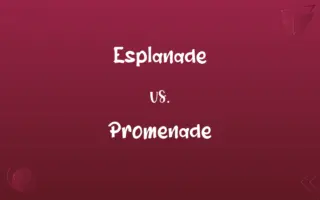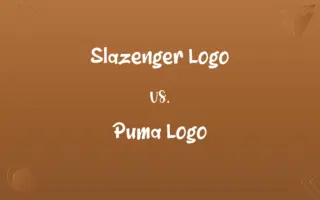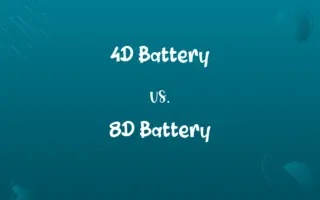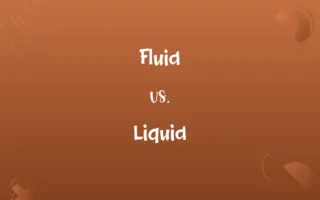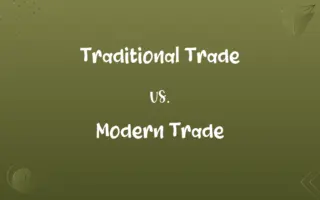Brass vs. Copper: Know the Difference

By Dua Fatima & Hifza Nasir || Published on March 6, 2024
Brass is an alloy of copper and zinc, known for its malleability and corrosion resistance, whereas copper is a pure element with high thermal and electrical conductivity, and a distinctive reddish color.
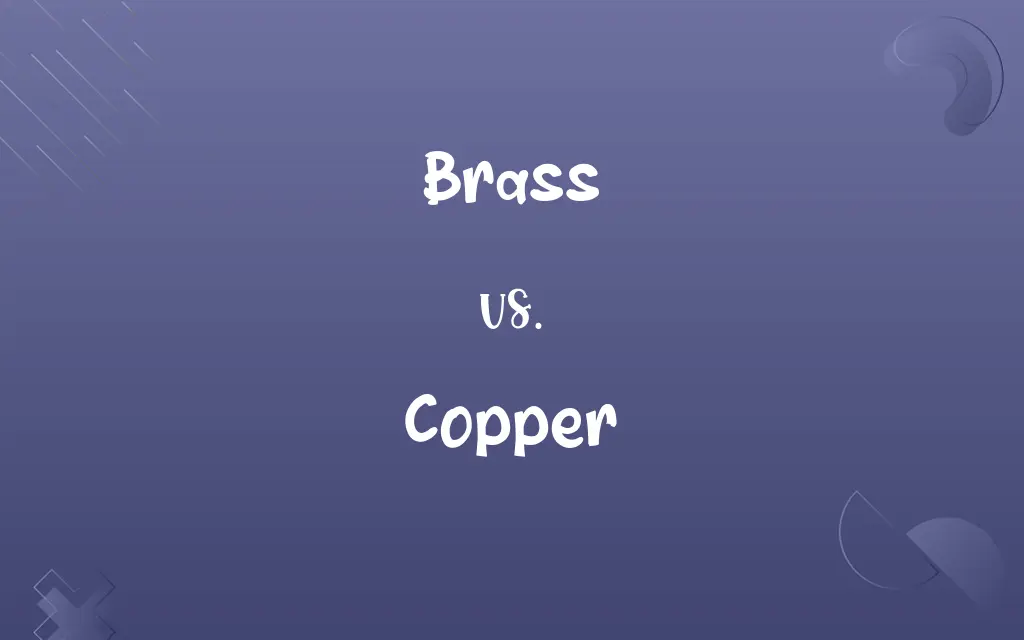
Key Differences
Brass, being an alloy of copper and zinc, exhibits characteristics that vary depending on the zinc content. Higher zinc content typically results in increased strength and lower malleability. Copper, on the other hand, is a pure metallic element with a characteristic reddish-brown color. It's highly valued for its excellent thermal and electrical conductivity, making it indispensable in electrical wiring and electronics.
Dua Fatima
Mar 06, 2024
Copper also has antimicrobial properties, which, combined with its workability, makes it suitable for use in medical environments and in applications requiring high levels of hygiene. Brass is widely appreciated for its acoustic properties, making it a preferred material for musical instruments, as well as for fittings and gears due to its resistance to corrosion and spark-free nature when struck against other materials.
Hifza Nasir
Mar 06, 2024
Both metals exhibit a resistance to corrosion, copper's patina is known for its protective qualities that prevent further corrosion, a feature that brass inherits to a lesser degree. This patina gives copper its distinctive greenish color over time, often seen in architectural structures.
Dua Fatima
Mar 06, 2024
The choice between brass and copper is largely dependent on the specific application. Brass is often selected for its aesthetic appeal and durability in mechanical and decorative applications, whereas copper is chosen for its conductivity and natural properties in electrical, thermal, and antimicrobial applications.
Hifza Nasir
Mar 06, 2024
The production process also differentiates the two, with brass being an alloy that can be customized by adjusting the proportion of copper to zinc to suit different mechanical and aesthetic requirements. Copper's production is more straightforward, focusing on purifying the metal to achieve the desired conductivity and natural coloration.
Hifza Nasir
Mar 06, 2024
ADVERTISEMENT
Comparison Chart
Conductivity
Lower electrical and thermal conductivity than copper
High electrical and thermal conductivity
Hifza Nasir
Mar 06, 2024
Applications
Musical instruments, fittings, decorative items
Electrical wiring, electronics, plumbing
Shumaila Saeed
Mar 06, 2024
Corrosion Resistance
Good, especially in marine environments
Excellent, forms a protective patina
Dua Fatima
Mar 06, 2024
ADVERTISEMENT
Antimicrobial Properties
Less pronounced than copper
Strong antimicrobial properties
Hifza Nasir
Mar 06, 2024
Brass and Copper Definitions
Brass
Customizable alloy.
The proportion of zinc in brass can be adjusted to change its hardness and color.
Hifza Nasir
Feb 27, 2024
ADVERTISEMENT
Copper
Utilized for its antimicrobial properties.
Copper surfaces in hospitals help reduce the spread of infections.
Dua Fatima
Feb 27, 2024
Brass
Known for its yellowish color.
The saxophone's brass body contributes to its distinct appearance and sound.
Dua Fatima
Feb 27, 2024
Copper
Forms a protective patina.
Copper roofing develops a greenish layer that protects it from further corrosion.
Hifza Nasir
Feb 27, 2024
Brass
An alloy of copper and zinc.
Brass is widely used for door handles due to its corrosion resistance.
Hifza Nasir
Feb 27, 2024
Copper
Essential in electronics.
Copper is a key material in manufacturing circuit boards and electrical components.
Shumaila Saeed
Feb 27, 2024
Brass
Offers spark resistance.
Brass tools are used in explosive environments to prevent sparks.
Shumaila Saeed
Feb 27, 2024
Copper
Distinguished by its reddish-brown color.
The Statue of Liberty's green patina originated from its copper skin.
Hifza Nasir
Feb 27, 2024
Brass
Used in decorative items.
Brass fittings are commonly found in luxury furniture for their aesthetic appeal.
Dua Fatima
Feb 27, 2024
Copper
A pure metallic element.
Copper's high conductivity makes it ideal for electrical wiring.
Dua Fatima
Feb 27, 2024
Brass
An alloy (usually yellow) of copper and zinc, in variable proportion, but often containing two parts of copper to one part of zinc. It sometimes contains tin, and rarely other metals.
Dua Fatima
Feb 27, 2024
Copper
Symbol Cu A ductile, malleable, reddish-brown metallic element that is an excellent conductor of heat and electricity and is widely used for electrical wiring, water piping, and corrosion-resistant parts, either pure or in alloys such as brass and bronze. Atomic number 29; atomic weight 63.546; melting point 1,085°C; boiling point 2,562°C; specific gravity 8.96; valence 1, 2. See Periodic Table.
Dua Fatima
Feb 27, 2024
Brass
Coin made of copper, brass, or bronze.
Provide neither gold, nor silver, nor brass in your purses, nor scrip for your journey.
Dua Fatima
Feb 27, 2024
Copper
Any of various small butterflies of the subfamily Lycaeninae, having predominantly copper-colored wings.
Dua Fatima
Feb 27, 2024
Brass
A yellowish alloy of copper and zinc, sometimes including small amounts of other metals, but usually 67 percent copper and 33 percent zinc.
Dua Fatima
Feb 27, 2024
Copper
A common metal of a reddish color, both ductile and malleable, and very tenacious. It is one of the best conductors of heat and electricity. Symbol Cu. Atomic weight 63.3. It is one of the most useful metals in itself, and also in its alloys, brass and bronze.
Hifza Nasir
Feb 27, 2024
Copper
Any of various specialized items that are made of copper, where the use of copper is either traditional or vital to the function of the item.
Dua Fatima
Feb 27, 2024
Repeatedly Asked Queries
What are the main differences between brass and copper?
Brass is an alloy of copper and zinc, known for its durability and corrosion resistance, while copper is a pure element with high thermal and electrical conductivity.
Dua Fatima
Mar 06, 2024
Why is brass used in musical instruments?
Brass offers unique acoustic properties, making it suitable for musical instruments like trumpets and trombones for their sound quality.
Dua Fatima
Mar 06, 2024
Is brass or copper more expensive?
Generally, copper is more expensive due to its use in electrical applications and its status as a pure element, but brass prices can vary based on the alloy composition and market demand.
Hifza Nasir
Mar 06, 2024
Do both brass and copper have antimicrobial properties?
While both have antimicrobial properties, copper's are more pronounced, making it more suitable for applications requiring high levels of hygiene.
Dua Fatima
Mar 06, 2024
Can copper be used outdoors without corroding?
Yes, copper forms a protective patina when exposed to the elements, which prevents further corrosion, making it suitable for outdoor use.
Dua Fatima
Mar 06, 2024
How does the zinc content in brass affect its properties?
Increasing the zinc content in brass generally increases its strength but decreases its malleability and corrosion resistance.
Hifza Nasir
Mar 06, 2024
Can the color of brass and copper be used to distinguish them?
Yes, brass typically has a more yellowish hue, while copper is known for its distinctive reddish-brown color.
Dua Fatima
Mar 06, 2024
Why is copper preferred for electrical applications?
Its high electrical conductivity makes copper the material of choice for electrical wiring and components.
Shumaila Saeed
Mar 06, 2024
Why is copper used in plumbing?
Copper's durability, corrosion resistance, and antimicrobial properties make it ideal for plumbing systems.
Hifza Nasir
Mar 06, 2024
How are brass and copper recycled?
Both brass and copper are highly recyclable, with scrap materials being melted down and reused for new products, reducing waste and the need for new raw materials.
Hifza Nasir
Mar 06, 2024
Share this page
Link for your blog / website
HTML
Link to share via messenger
About Author
Written by
Dua FatimaCo-written by
Hifza Nasir














